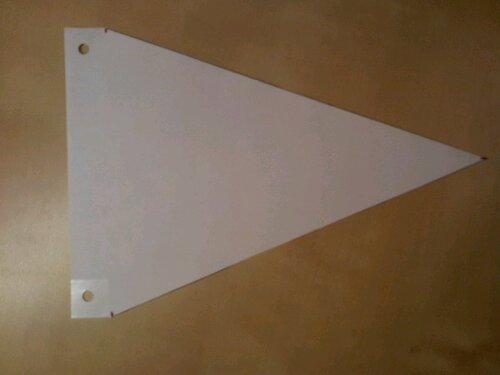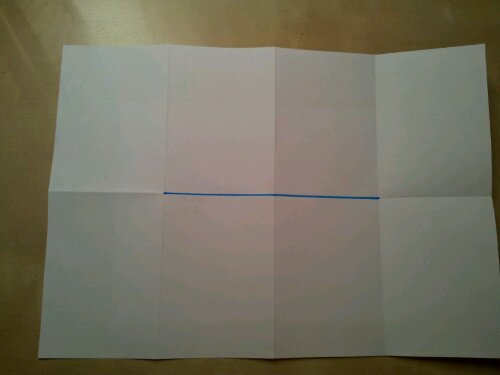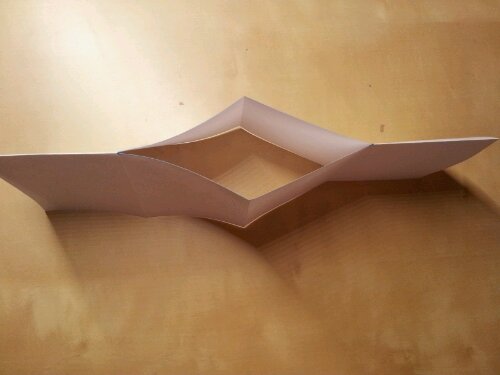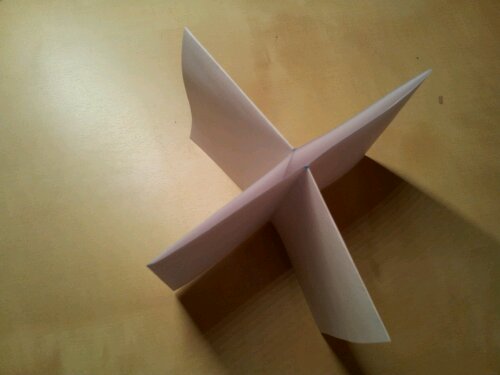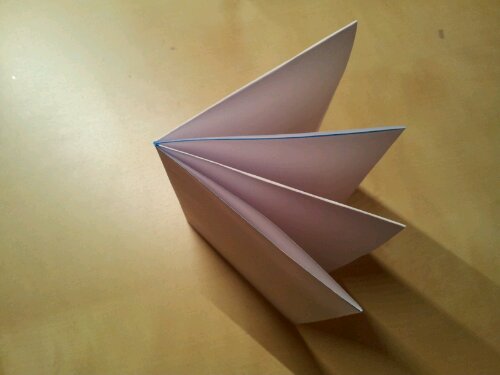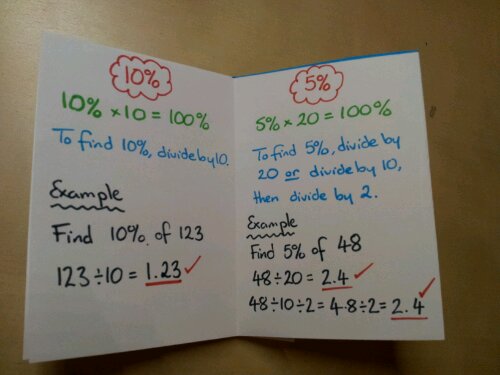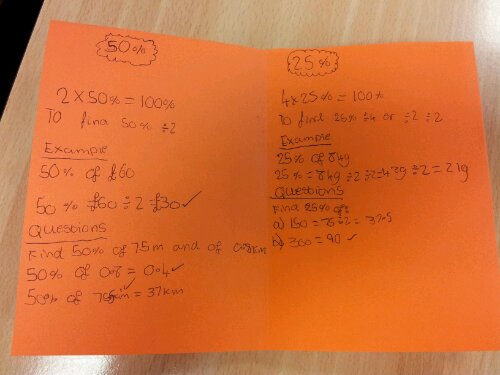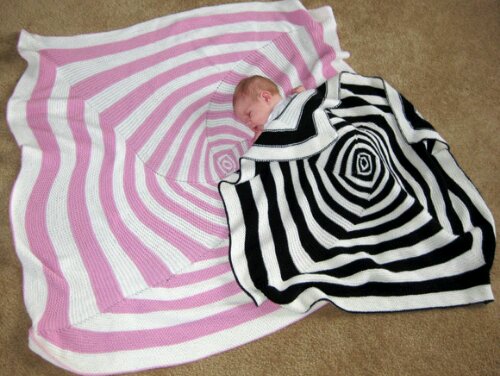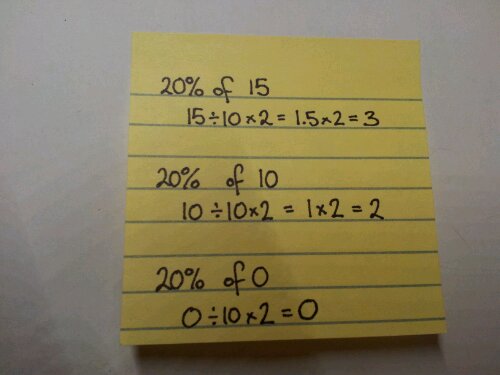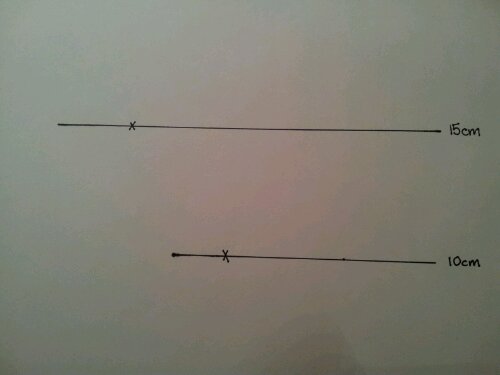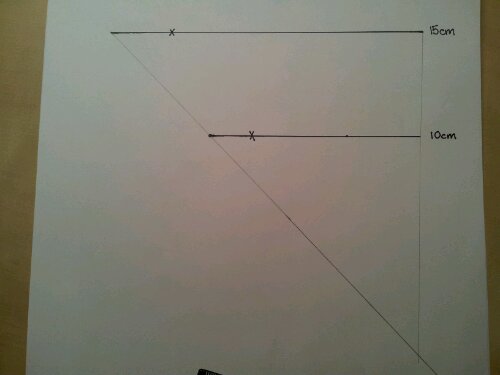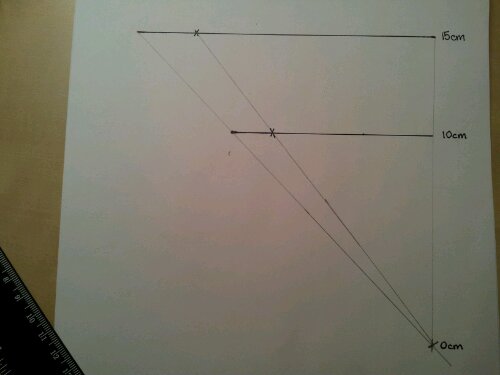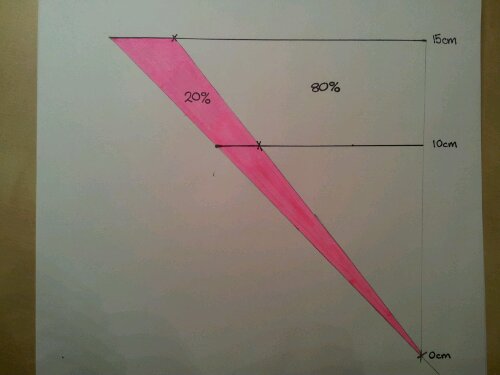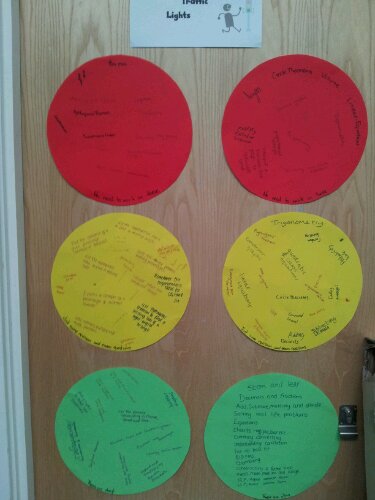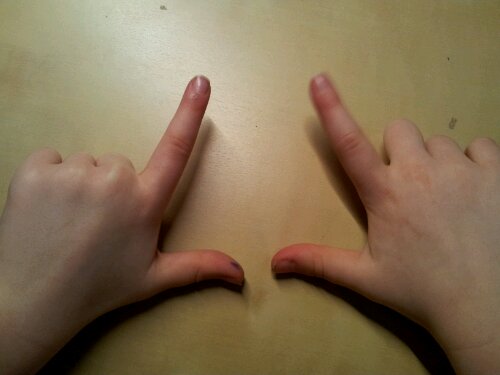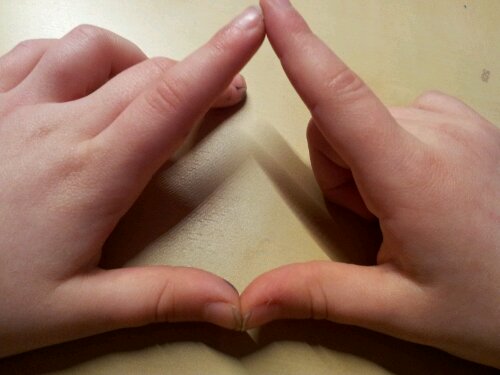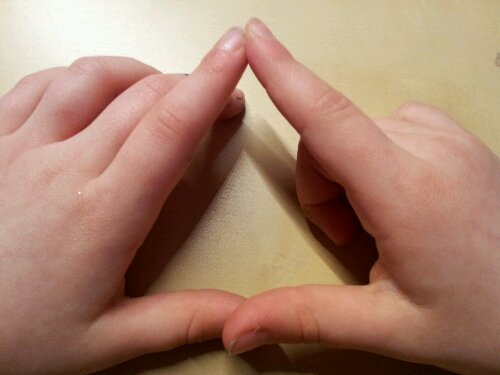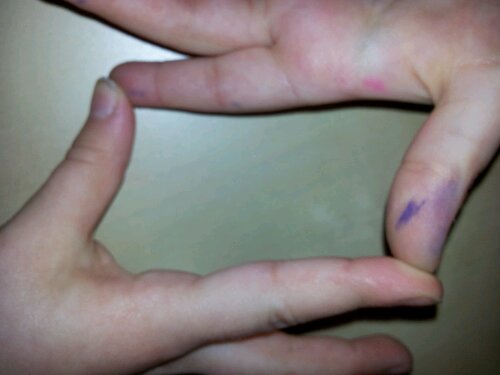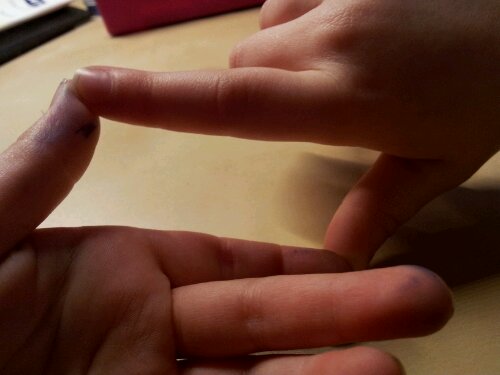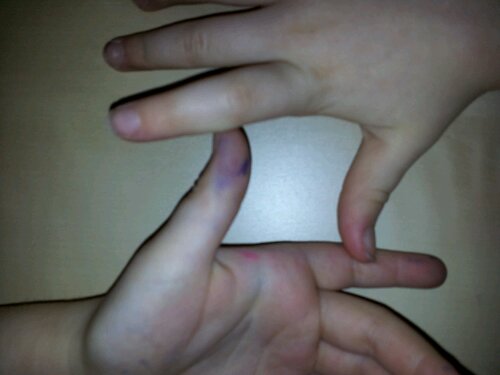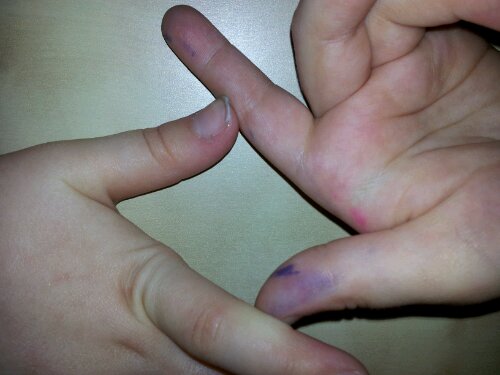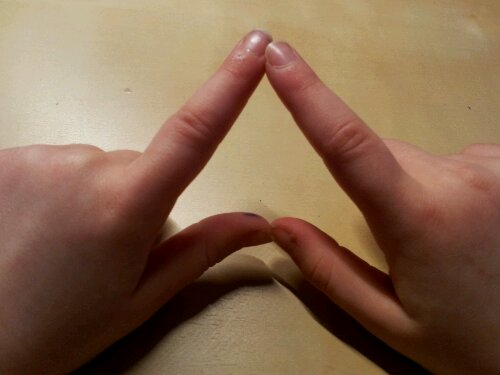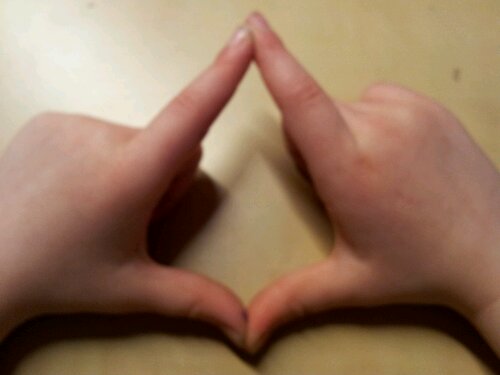I used to teach in a corner classroom: 8 windows, lovely light quality, nice views, only one maths display board.
We had to get creative about how to display work.
Peelable glass paints were useful for making temporary stained glass effect displays on the windows. They were time-consuming and tricky to do with large groups.
Hanging displays were very useful. The longest display I’ve ever done consisted of 30 strips of A4 length card, with a transformation repeating pattern on each. The card was hole punched at either end and then attached with a piece of string to the next one (treasury tags would have been quicker). It took a lot of blu-tak to put it up, but it went nearly the whole way around the room.
My children were making Easter bunting and it got me thinking. Why don’t we use bunting to summarise key facts in class? It’s easy to make, cheap, you can colour code by topic and you can add to it all term by connecting another fact onto the end. It won’t take up precious wall display space as you can hang it above displays, around boards or even across the room.
Equipment
Card (size and color of your choice)
Scissors
Ruler
Hole punch
Tape (optional)
String or treasury tags
Decision time
Decide on your theme:
– one colour for all?
– one colour per topic?
– one colour per grade?
– traffic light for difficulty?
Decide on your shape:
– classic isosceles triangle?
– rectangles for more writing area?
– different shapes for different shape facts?
Isosceles triangle instructions
The instructions were made using A5 card.
Measure roughly 2-3cm down from the narrow end of your card.
Mark the midpoint of the bottom of the card.
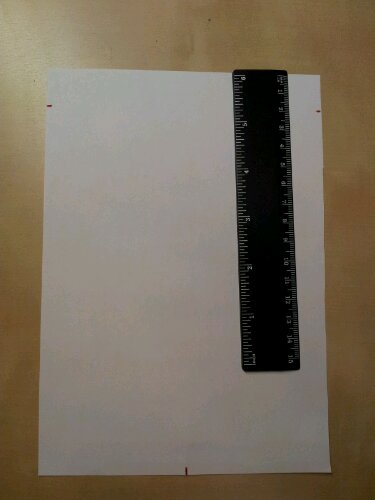
Join up these three points and cut out.
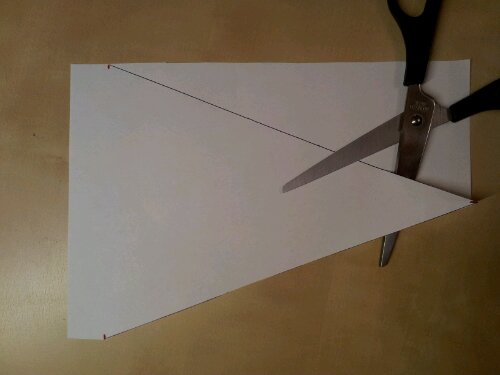
Wrap a small piece of tape around either side of the top of the shape. This strip across the top reinforces the flag. The holes won’t be too close to a point, nor will they tear easily.
Repeat for as many flags as you need.
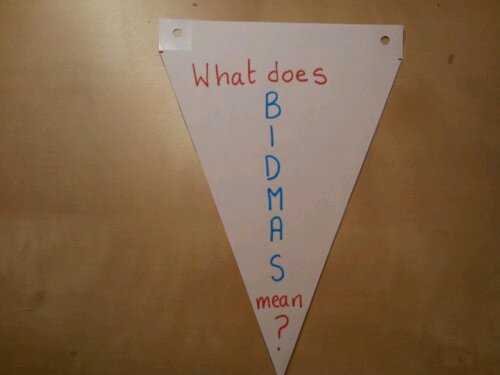
Connect them together by threading onto a long piece of string, if you want a fixed length display.
Connect them by treasury tag or knotted string, if you want an extendable display.
If you made one of these for each unit, you could store them away and get them out for test revision or recaps.

